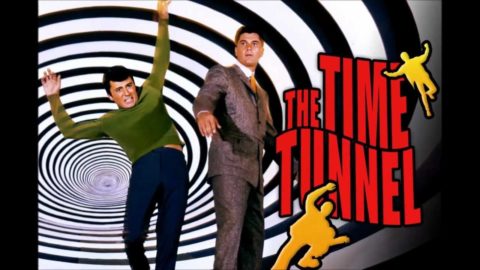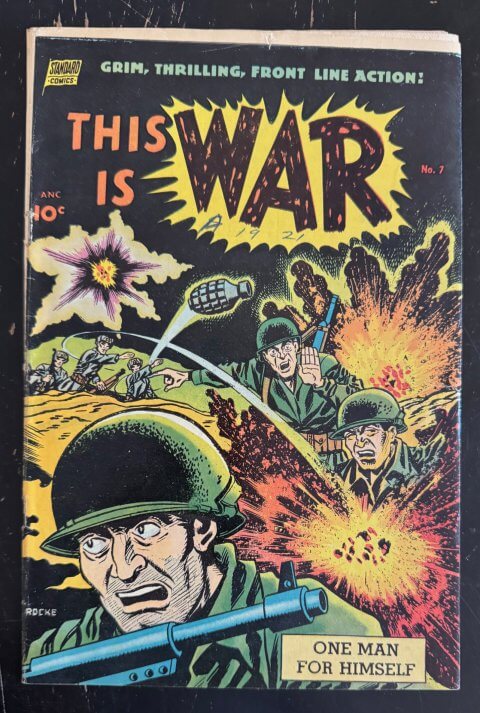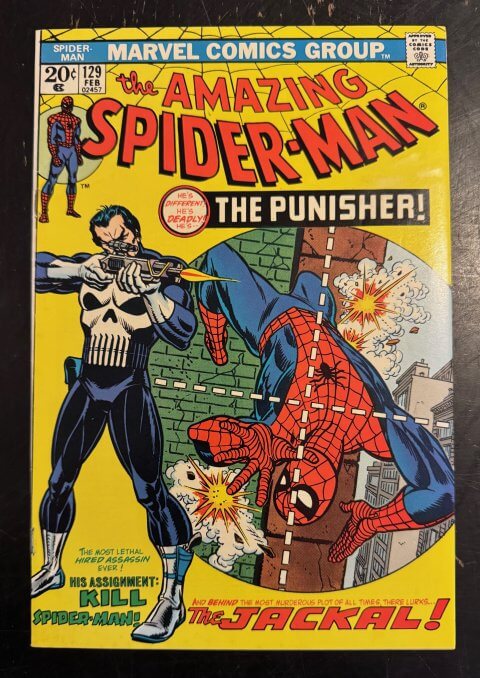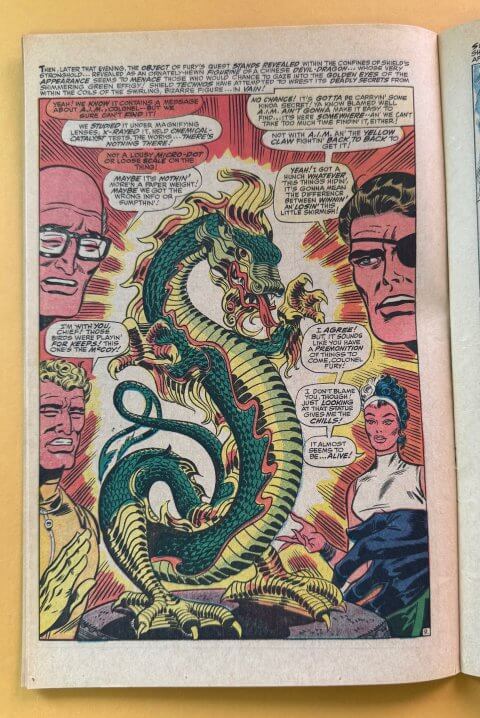
Nostalgia cycles exist and they have a great effect on collecting comics and other pop culture collectibles. The process seems eternal. As kids we enjoyed what we enjoyed then too suddenly we grew up and found ourselves in school. After school we were hustling to land a good job then we hooked up with some great significant other, got ourselves married and some of us then had kids. And before we knew what hit us we were in our 30s remembering the carefree days of our youth. This is just one of the many paths people take, yours may be different but the end result is the same – wanting a connection back to your youth.
I’m not sure how many years have to go by before the nostalgia cycle swings into motion but I’ll say 20 is close and it’s a nice even number and its long enough to allow us to go through all those changes and reach a level of stability and disposable income that would allow us to actively pursue the things we want to reconnect with.
Watching Ninja Turtles when we go home from school or watching WWE wrestling on a Saturday morning are strong and pleasant memories. For me, it was the Six Million Dollar Man, Star Trek (by then 5 years into syndication), Kung Fu and the Planet of the Apes TV show. I remember in my early 30s buying a beautiful high-grade set of Charlton’s Six Million Dollar Man and Emergency magazines; I still have them.
The pressures of today’s world are not easy to cope with at times: marriage, kids, work, ageing parents and on and on. Boy, it would be nice to be 11 years old again.
Hunting down and finding those old Hacksaw Duggan and Bushwacker LJNs or those old Flintstone comics may bring you mounds of joy but before you dish out the big bucks to recapture your youth maybe you should step back and review your exit strategy. Buying nostalgia can be a very costly endeavour and most of us can’t afford to buy this stuff without the assurance that they will hopefully continue to be worth those same big bucks or hopefully even bigger bucks.
This is where I get to introduce my concept of the generational jump. The problem with pop culture properties is that many of them service only one generation, maybe spilling over into the early part of the next one. The Flintstones did not make a generational jump because we fans could not convince our kids to watch. The kids found their own Ralph Cramden in Homer Simpson and the Simpsons, they shunned the Flintstones. It’s pretty easy and cheap to buy high-grade Flintstones comics from the 60s because there is very little demand for them. The questions we should be asking ourselves if we want to hold comics long term are will Deadpool, the Teen Age Mutant Ninja Turtles, Walking Dead still be cool to the next generation. Time flies by and your little nostalgia binge could cost you dearly if there are no buyers around when you decide to sell.
The largest entertainment company in the world has for its logo a character that nobody cares about anymore. Mickey Mouse is not a viable pop culture character in today’s marketplace. Times change and we should keep that in mind if we want to hold comics as investments for a long time. More Fun Comics #52 was a huge book in the late 1970s: I think it was the third or fourth most valuable comic book. The Spectre simply did not make any generational jumps and the old insular guard of comic collecting elitists that gave it the value were not replaced by like-minded folk as they aged and got out of the hobby by the 1990s. In contrast, Batman has made four successful generational jumps, Spidey has made three.
Comic investors and speculators use the nostalgia cycle to their advantage: when did the Transformers and G.I. Joe get hot? How come I’m now selling Mighty Morphin Power Rangers stuff? What were the kids into 20 years ago? Pokemon! Pokemon was huge and it is now 20 years since it was the thing and today people are asking about the original Charizard cards! I know these examples are not comics but they get the point across.
When old boxes of comics come in I’m always hoping they are filled with Batmans and Spideys. I frown at the Gunsmokes, the Lassies and the Challengers of the Unknown: these properties had their nostalgia cycle but they did not have the generational jumps needed to sustain the demand.




Hi Walter,
Utility of ownership, scarcity of grade and, now, generational jump. Walter, you’re a man of novel cliches. ;-D
Seriously, a friend and I were talking about that just the other night. He told me he loved the old Dell Western covers and has found that he can now buy slabbed issues off eBay for a tenth of what they are listed for in the guide. The market for those old comics is so dead from the lack of generational jumps – several generations in this case – that they’ve become virtually worthless.
Fans of comics usually grow up with the characters. Fans for Roy Rogers, Gene Autry, etc, are either deceased or near-to, and the cowboys themselves are long gone, so no new generations can become fans. My friend buys these comics for the love of them. His dad was a fan and so, by extention, he became one. I have similar old stuff that have become worthless over the years, due to the same problem, but I never paid much for them to begin with, so I’m not out very much money.
Lastly, I’ve been really been enjoying your articles, especially the TTCs, but also, the Covers 365 and MAS.
Regards, Tony
An added note: The CW Crisis crossover show recently changed Green Arrow to the Spectre, making me wonder if they’re planning a new show featuring that character. If so, it might revive interest in More Fun 52. I have number 51, with the peekaboo Spectre on the last page, which I bought a gazillion years ago for 10 bucks in Fine.
Very well put. However, the nostalgia “window” can remain open longer, for many years as each collector matures and keeps acquiring…though maybe that can be the exceptional collector rather than the “herd” going after the books.
How long do you think this peak of nostalgia interest lasts? A decade? Two? I really wonder.
I know guys my age (67) up into their eighties still collecting the comics of the early 1940s and 1950s) or characters (Lone Ranger, Daniel Boone, Zorro) of their youth…but I admit they are clearly exceptions to the norm. They may not be part of the “herd” who drive up prices in your examples. They (and I) have no interest in stuff only 20 years old anymore. My interests mostly stop at anything that came along after I hit 20 years old or so. But mine keep going BACK further and further in time, to the beginnings of comics in the 1930s. And in book illustration back to the early 1800s.
What’s interesting to me is younger fans, serious about comics history, but who are simply okay with viewing things online, and have no need to own the originals. But even old timers, veteran collectors, often fall into this bracket…a great many are my customers for comics archives and Omnibus collections. But youngsters often don’t even need these. Online can be good enough for them. I particularly find this in the collecting of “real” books—vintage antiquarian work—and early magazine appearances of illustrators. There is a generational shift away from wanting to have the original source material. Now, a compilation “Art of” book or online access can be fine. Completionists are a rarity, as we even see in comics collecting. Now its all about keys and first appearances for younger fans.
Your More Fun Spectre is an interesting example but may not be the best…these particular comics are still tough to find and very expensive. I have not seen demand fall off for this example. I can say this from personal experience, as someone still looking for several of these issues. I have to settle for lesser condition copies because I am not willing to spend $1200, $1500, $2000 or more for nice copies of these early More Funs with The Spectre. So scarcity and long-term interest plays in here. I wasn’t alive in the 1940s, but there is a nostalgia factor for me in acquiring books like this that were out of my reach when I first saw them or read about them in comic histories. But could not afford them for the first few decades of my life.
On the other hand, Big Little Books, Dime Novels, many lesser pulps and particularly 1950s digests and western comics, and particularly strip reprint comics (Ace, King, Popular, Magic, Super) were once highly collected but now all have seen demand drop as the original buyers aged out and literally pass away.
Supply is also a big factor…most of these genres were VERY popular at one time. Sci-fi pulps and digest were particularly collected and saved because there was already a sci-fi fandom in the forties and fifties. Big Little Books too. So now supply has outstripped demand and only exceptional hi grade copies, or the occasional longer-lived title that remained in the oublic’s view (The Shadow, Green Hornet, Betty Boop, Flash Gordon in BLBs) or special issue (L. Ron Hubbard, Lovecraft, Howard, Bradbury, Heinlein, Herbert in pulps) commands even a little interest.
I hear you Walt! I remember loving a bunch of stuff in the 60’s that I wouldn’t look at today… like Time Tunnel, Cimmeron Strip, or Land of the Giants. However… stuff that happened BEFORE me I feel I must preserve because the people who lived and produced it are gone or going. I listen to 20’s and 30’s music, old radio shows, love old B&W movies, collect pulps and comics and have an old house filled with old furniture.
I started collecting ME westerns a number of years ago because of horror crossover and then really liked those books so started in on them and they had the added bonus of not being as highly collected. Did the same thing with Airfighters and Airboy! Call me both a preservationist as well as nostalgic! When I finally sell off those books if I don’t make much money I still have the warm and fuzzy feeling of having owned them AND of having a connection with the past. Oh… and while I will never own a More Fun 52… sadly, I do have a More Fun 65… great cover and today its ALL about the covers no matter age or genre!
Walt, I think you are taking the dealer’s perspective more than the collector’s/investor’s perspective. You see the changes in pricing and turnover daily, and you are also more tied to the success or failure of your inventory. If you are not simply looking for monetary return on investment (i.e. you get a “mental return” by having the object to admire/use), and your net work or income is not strongly dependent on the value, I don’t think this issue is quite as important. If you stock up to sell and the stock doesn’t move, that is a problem, but most collectors are going to have a small “stock”, and it is generally to hold and enjoy.
As usual Bud contributes a ton to the discussion. Regarding the short-term vs. long-term perspective, on this point I will echo Bud’s key point on scarcity and supply vs. demand. Think about the spikes for various collectibles through the years – some go up and come down, while some stay up. By and large I think the ones that come down are where there is a large untapped supply and a demand surge, while for the ones that stay up, all of the supply is already out there. The former would be something like your example of X-Men #94 from a few posts ago, while the early More Funs are in the other camp. Sometimes the “spike” is more like a hump as interest returns and then fades, but in both cases the fade is generally supported by plenty of supply.
(To pile on with Bud, I think the More Fun #52 example is very bad. CGC 3.0 for 9k in 2005 and 32k in 2018 – and the problem is…?)
My two basic punch-lines on this topic are:
– Are comics generational nostalgia or Americana? Browse a Hake’s auction catalog – this isn’t nostalgia for the most part, as most of the items date from before the bidders were born. (This is of course true in today’s Golden Age market as well.) I agree entirely that generational nostalgia can burn you, but as long as the economy expands, I think Americana (North Americana, if you will) is a good area to play in. Antiques Roadshow is another example (and they have featured some nice raw books recently). This idea is why I don’t gravitate towards books like “First Yoshisi Yojimbo” or whatever the samurai rabbit is, but rather towards Schomburg drawing Cap punching Hitler (just making that up – I don’t have those covers memorized). The former means something to aficionados – the latter means something to anybody who is interested in North American WW II culture. (Similarly I keep looking at Canadian Whites – these are certainly more about culture than comic continuity.)
– In any case look for scarcity. As you have removed the scales from my eyes regarding Four Color, I am coming to view the say pre-1950 Four Colors as tough in high grade (at least at reasonable prices). Those painted Western or Mountie covers are totally not in demand, but if they ever are… So I would like to pick up some that I love at decent prices – if they go nowhere, so what – I am a conservator of Americana, and I am happy to take that role. If they do… Most comics after 1957 or so are not scarce, and so you have the double whammy of the nostalgia buyer ageing out of the market, and every one of them having copies of the comics.
In sum I think your points are well-taken, but only address part of the picture and therefore seem overly negative to me.
Gerald’s and my post crossed in the mail, but we are saying the same thing – culture rather than nostalgia – I think you are going to find many young people to take up the torch for this aspect.
Walter, I still agree with your general premise on stuff like TMNT, Transformers, etc.
But the 20-year perspective doesn’t work for early Silver Age–say from Fantastic Four #1 on, Spidey, The Hulk, The Avengers. etc. These books have continued to go up and up in value—20 years after publication, in 1981-83 say, the prices were still scarcely to the point they are today. but with some research you might bring them into the argument.
However, since then the films drove up prices. I also think readers had to get early past middle age and family demands, and move into having some REAL money to buy them as they become empty-nesters and even retirees. Did these guys all read those first issues–no, most did not. But they wanted those first issues for more than nostalgia reasons.
That said, I sold my first Marvel collection in the 1970s when I was in college, and also my complete EC collection…sniff. But I enjoyed collecting the pre-1970 Marvels again, and am closing in on having most of my favorite EC’s too, in better shape this time. Back then, GVG or VG was perfectly acceptable, just to read and have a copy. Now I like those glossier Fine range copies at least.
Gerald, I have a coverless More Fun #52, paid $500 for it several years ago. Someone brought it into a show, hit everyone there and ended up back with me since I offered the most for it.
It was More Fun #54 that I like to say brought be back to collecting Golden Age, after I moved into illustrated books and other art in the 1970s and 1980s. I thought–short-sighted as I was–old comics had gotten too expensive! Rare books seemed like better deals.Fortunately I didn’t let go of many other comics, I just stopped actively collecting comics for a while.
Dear old Bill Thailing, one of the earliest dealers, began back in the fifties. He sent me a catalog sometime int he eighties, out of the blue. One of the books I found it was, interestingly enough, More Fun #54, with a great Spectre cover. It had two centerfolds out but it was just $45, with that wonderful cover and the complete Spectre story! And affordable. I later got a coverless copy to complete it. I was pretty thrilled to find this in Bill’s catalog, and other Golden Age books that, at $50 and $75, suddenly seemed quite affordable. That dragged me back in, and I haven’t stopped collecting since.
Finally, I collected Magnus, Zorro, Lone Ranger, Flash Gordon and the best of the fifties Dells, but I didn’t really discover the full extent of the Dell painted covers on lesser books until pretty recently. I am happily scoring them at $10, $15, $20 for nice copies now, titles like Turok that I was never a fan of, Ben Bowie, Zane Grey, Space Family Robinson/Lost in Space…. Maybe we’ll start a new trend, or more likely there are plenty to go around.
Good critiques. The topic is more complex and harder to simplify that I thought it would be when the idea to write about it came to me. I agree with many of the points everyone has noted above, where the theory doesn’t work, where my examples are poorly chosen etc.
I’ll have to redefine my argument to a more narrow economic study.
Collectible values do benefit from nostalgia, the length of a nostalgia cycle can last decades, these values can be sustained if the next generation of collectors buy into the desirability of the property (Generational Jump).
Collectibles values have been hurt by the fact that their values were supported only by the generation that had a connection to the property (Dell Westerns). Noting that there are a lot of other factors and influences at play I do argue that the above stated holds true.
We as current collectors can only hope there will be a next generation who has our same nostalgia, preservation, cultural interests to want our stuff! I once heard it that we are merely the current caretakers of objects and eventually it will be someone else’s duty to carry on.
Hey Walt.,…you use to have a term for books that seemed to have no future value, and you’d throw near mint copies into your $1 bins…Dreks?….I recall Iron Fist, Luke Cage, Lobo, Black Lightening, Marvel Superheroes, ( Inc Capt Marvels appearances) and on and on it went. Now those books are collectable and value. Hollywood is dying to find new Material…See female Capt Marvel and Bloodshot as examples. But Note to self…I obviously paid way to much for those low to mid grade Dells I bought when I last visited Big B Hamilton.
4